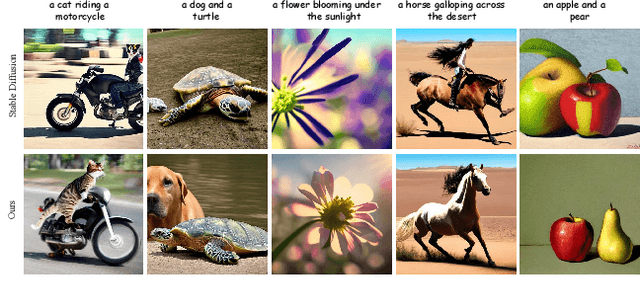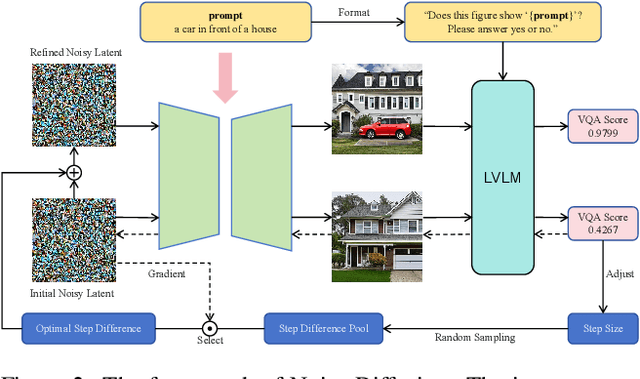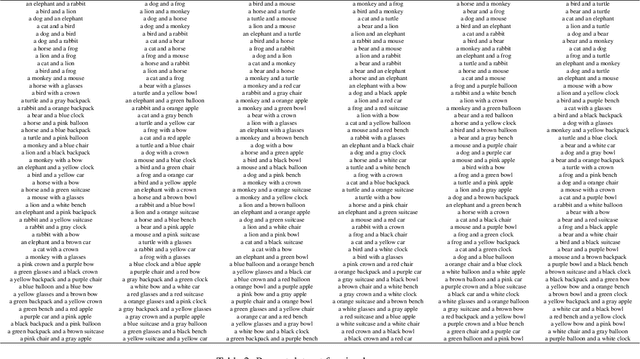Yao Zhu
HAROOD: A Benchmark for Out-of-distribution Generalization in Sensor-based Human Activity Recognition
Dec 12, 2025Abstract:Sensor-based human activity recognition (HAR) mines activity patterns from the time-series sensory data. In realistic scenarios, variations across individuals, devices, environments, and time introduce significant distributional shifts for the same activities. Recent efforts attempt to solve this challenge by applying or adapting existing out-of-distribution (OOD) algorithms, but only in certain distribution shift scenarios (e.g., cross-device or cross-position), lacking comprehensive insights on the effectiveness of these algorithms. For instance, is OOD necessary to HAR? Which OOD algorithm performs the best? In this paper, we fill this gap by proposing HAROOD, a comprehensive benchmark for HAR in OOD settings. We define 4 OOD scenarios: cross-person, cross-position, cross-dataset, and cross-time, and build a testbed covering 6 datasets, 16 comparative methods (implemented with CNN-based and Transformer-based architectures), and two model selection protocols. Then, we conduct extensive experiments and present several findings for future research, e.g., no single method consistently outperforms others, highlighting substantial opportunity for advancement. Our codebase is highly modular and easy to extend for new datasets, algorithms, comparisons, and analysis, with the hope to facilitate the research in OOD-based HAR. Our implementation is released and can be found at https://github.com/AIFrontierLab/HAROOD.
Automating Hardware Design and Verification from Architectural Papers via a Neural-Symbolic Graph Framework
Nov 08, 2025Abstract:The reproduction of hardware architectures from academic papers remains a significant challenge due to the lack of publicly available source code and the complexity of hardware description languages (HDLs). To this end, we propose \textbf{ArchCraft}, a Framework that converts abstract architectural descriptions from academic papers into synthesizable Verilog projects with register-transfer level (RTL) verification. ArchCraft introduces a structured workflow, which uses formal graphs to capture the Architectural Blueprint and symbols to define the Functional Specification, translating unstructured academic papers into verifiable, hardware-aware designs. The framework then generates RTL and testbench (TB) code decoupled via these symbols to facilitate verification and debugging, ultimately reporting the circuit's Power, Area, and Performance (PPA). Moreover, we propose the first benchmark, \textbf{ArchSynthBench}, for synthesizing hardware from architectural descriptions, with a complete set of evaluation indicators, 50 project-level circuits, and around 600 circuit blocks. We systematically assess ArchCraft on ArchSynthBench, where the experiment results demonstrate the superiority of our proposed method, surpassing direct generation methods and the VerilogCoder framework in both paper understanding and code completion. Furthermore, evaluation and physical implementation of the generated executable RTL code show that these implementations meet all timing constraints without violations, and their performance metrics are consistent with those reported in the original papers.
Bridging the Gap Between Ideal and Real-world Evaluation: Benchmarking AI-Generated Image Detection in Challenging Scenarios
Sep 11, 2025



Abstract:With the rapid advancement of generative models, highly realistic image synthesis has posed new challenges to digital security and media credibility. Although AI-generated image detection methods have partially addressed these concerns, a substantial research gap remains in evaluating their performance under complex real-world conditions. This paper introduces the Real-World Robustness Dataset (RRDataset) for comprehensive evaluation of detection models across three dimensions: 1) Scenario Generalization: RRDataset encompasses high-quality images from seven major scenarios (War and Conflict, Disasters and Accidents, Political and Social Events, Medical and Public Health, Culture and Religion, Labor and Production, and everyday life), addressing existing dataset gaps from a content perspective. 2) Internet Transmission Robustness: examining detector performance on images that have undergone multiple rounds of sharing across various social media platforms. 3) Re-digitization Robustness: assessing model effectiveness on images altered through four distinct re-digitization methods. We benchmarked 17 detectors and 10 vision-language models (VLMs) on RRDataset and conducted a large-scale human study involving 192 participants to investigate human few-shot learning capabilities in detecting AI-generated images. The benchmarking results reveal the limitations of current AI detection methods under real-world conditions and underscore the importance of drawing on human adaptability to develop more robust detection algorithms.
A Sliding Layer Merging Method for Efficient Depth-Wise Pruning in LLMs
Feb 26, 2025Abstract:Compared to width-wise pruning, depth-wise pruning can significantly accelerate inference in resource-constrained scenarios. Howerver, treating the entire Transformer layer as the minimum pruning unit may degrade model performance by indiscriminately discarding the entire information of the layer. This paper reveals the "Patch-like" feature relationship between layers in large language models by analyzing the correlation of the outputs of different layers in the reproducing kernel Hilbert space. Building on this observation, we proposes a sliding layer merging method that dynamically selects and fuses consecutive layers from top to bottom according to a pre-defined similarity threshold, thereby simplifying the model structure while maintaining its performance. Extensive experiments on LLMs with various architectures and different parameter scales show that our method outperforms existing pruning techniques in both zero-shot inference performance and retraining recovery quality after pruning. In particular, in the experiment with 35\% pruning on the Vicuna-7B model, our method achieved a 1.654\% improvement in average performance on zero-shot tasks compared to the existing method. Moreover, we further reveal the potential of combining depth pruning with width pruning to enhance the pruning effect. Our codes are available at https://github.com/920927/SLM-a-sliding-layer-merging-method.
An Efficient Framework for Enhancing Discriminative Models via Diffusion Techniques
Dec 12, 2024Abstract:Image classification serves as the cornerstone of computer vision, traditionally achieved through discriminative models based on deep neural networks. Recent advancements have introduced classification methods derived from generative models, which offer the advantage of zero-shot classification. However, these methods suffer from two main drawbacks: high computational overhead and inferior performance compared to discriminative models. Inspired by the coordinated cognitive processes of rapid-slow pathway interactions in the human brain during visual signal recognition, we propose the Diffusion-Based Discriminative Model Enhancement Framework (DBMEF). This framework seamlessly integrates discriminative and generative models in a training-free manner, leveraging discriminative models for initial predictions and endowing deep neural networks with rethinking capabilities via diffusion models. Consequently, DBMEF can effectively enhance the classification accuracy and generalization capability of discriminative models in a plug-and-play manner. We have conducted extensive experiments across 17 prevalent deep model architectures with different training methods, including both CNN-based models such as ResNet and Transformer-based models like ViT, to demonstrate the effectiveness of the proposed DBMEF. Specifically, the framework yields a 1.51\% performance improvement for ResNet-50 on the ImageNet dataset and 3.02\% on the ImageNet-A dataset. In conclusion, our research introduces a novel paradigm for image classification, demonstrating stable improvements across different datasets and neural networks.
Noise Diffusion for Enhancing Semantic Faithfulness in Text-to-Image Synthesis
Nov 25, 2024



Abstract:Diffusion models have achieved impressive success in generating photorealistic images, but challenges remain in ensuring precise semantic alignment with input prompts. Optimizing the initial noisy latent offers a more efficient alternative to modifying model architectures or prompt engineering for improving semantic alignment. A latest approach, InitNo, refines the initial noisy latent by leveraging attention maps; however, these maps capture only limited information, and the effectiveness of InitNo is highly dependent on the initial starting point, as it tends to converge on a local optimum near this point. To this end, this paper proposes leveraging the language comprehension capabilities of large vision-language models (LVLMs) to guide the optimization of the initial noisy latent, and introduces the Noise Diffusion process, which updates the noisy latent to generate semantically faithful images while preserving distribution consistency. Furthermore, we provide a theoretical analysis of the condition under which the update improves semantic faithfulness. Experimental results demonstrate the effectiveness and adaptability of our framework, consistently enhancing semantic alignment across various diffusion models. The code is available at https://github.com/Bomingmiao/NoiseDiffusion.
Constrained Coding and Deep Learning Aided Threshold Detection for Resistive Memories
Nov 19, 2024Abstract:Resistive random access memory (ReRAM) is a promising emerging non-volatile memory (NVM) technology that shows high potential for both data storage and computing. However, its crossbar array architecture leads to the sneak path problem, which may severely degrade the reliability of data stored in the ReRAM cell. Due to the complication of memory physics and unique features of the sneak path induced interference (SPI), it is difficult to derive an accurate channel model for it. The deep learning (DL)-based detection scheme \cite{zhong2020sneakdl} can better mitigate the SPI, at the cost of additional power consumption and read latency. In this letter, we first propose a novel CC scheme which can not only reduce the SPI in the memory array, but also effectively differentiate the memory arrays into two categories of sneak-path-free and sneak-path-affected arrays. For the sneak-path-free arrays, we can use a simple middle-point threshold detector to detect the low and high resistance cells of ReRAM. For the sneak-path-affected arrays, a DL detector is first trained off-line (prior to the data detection of ReRAM). To avoid the additional power consumption and latency introduced by the DL detector, we further propose a DL-based threshold detector, whose detection threshold can be derived based on the outputs of the DL detector. It is then utilized for the online data detection of all the identified sneak-path-affected arrays. Simulation results demonstrate that the above CC and DL aided threshold detection scheme can effectively mitigate the SPI of the ReRAM array and achieve better error rate performance than the prior art detection schemes, without the prior knowledge of the channel.
AdvLogo: Adversarial Patch Attack against Object Detectors based on Diffusion Models
Sep 11, 2024



Abstract:With the rapid development of deep learning, object detectors have demonstrated impressive performance; however, vulnerabilities still exist in certain scenarios. Current research exploring the vulnerabilities using adversarial patches often struggles to balance the trade-off between attack effectiveness and visual quality. To address this problem, we propose a novel framework of patch attack from semantic perspective, which we refer to as AdvLogo. Based on the hypothesis that every semantic space contains an adversarial subspace where images can cause detectors to fail in recognizing objects, we leverage the semantic understanding of the diffusion denoising process and drive the process to adversarial subareas by perturbing the latent and unconditional embeddings at the last timestep. To mitigate the distribution shift that exposes a negative impact on image quality, we apply perturbation to the latent in frequency domain with the Fourier Transform. Experimental results demonstrate that AdvLogo achieves strong attack performance while maintaining high visual quality.
Survey on Knowledge Distillation for Large Language Models: Methods, Evaluation, and Application
Jul 02, 2024



Abstract:Large Language Models (LLMs) have showcased exceptional capabilities in various domains, attracting significant interest from both academia and industry. Despite their impressive performance, the substantial size and computational demands of LLMs pose considerable challenges for practical deployment, particularly in environments with limited resources. The endeavor to compress language models while maintaining their accuracy has become a focal point of research. Among the various methods, knowledge distillation has emerged as an effective technique to enhance inference speed without greatly compromising performance. This paper presents a thorough survey from three aspects: method, evaluation, and application, exploring knowledge distillation techniques tailored specifically for LLMs. Specifically, we divide the methods into white-box KD and black-box KD to better illustrate their differences. Furthermore, we also explored the evaluation tasks and distillation effects between different distillation methods, and proposed directions for future research. Through in-depth understanding of the latest advancements and practical applications, this survey provides valuable resources for researchers, paving the way for sustained progress in this field.
GreenCOD: A Green Camouflaged Object Detection Method
May 25, 2024



Abstract:We introduce GreenCOD, a green method for detecting camouflaged objects, distinct in its avoidance of backpropagation techniques. GreenCOD leverages gradient boosting and deep features extracted from pre-trained Deep Neural Networks (DNNs). Traditional camouflaged object detection (COD) approaches often rely on complex deep neural network architectures, seeking performance improvements through backpropagation-based fine-tuning. However, such methods are typically computationally demanding and exhibit only marginal performance variations across different models. This raises the question of whether effective training can be achieved without backpropagation. Addressing this, our work proposes a new paradigm that utilizes gradient boosting for COD. This approach significantly simplifies the model design, resulting in a system that requires fewer parameters and operations and maintains high performance compared to state-of-the-art deep learning models. Remarkably, our models are trained without backpropagation and achieve the best performance with fewer than 20G Multiply-Accumulate Operations (MACs). This new, more efficient paradigm opens avenues for further exploration in green, backpropagation-free model training.
 Add to Chrome
Add to Chrome Add to Firefox
Add to Firefox Add to Edge
Add to Edge